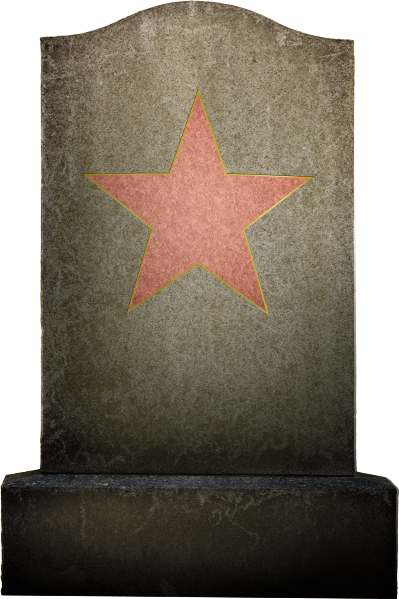
FIND FAMOUS TOMBS:
Notable Burial Sites in New Orleans.
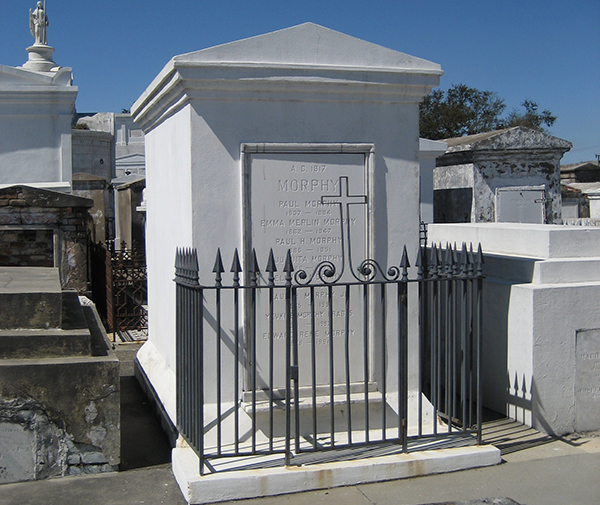
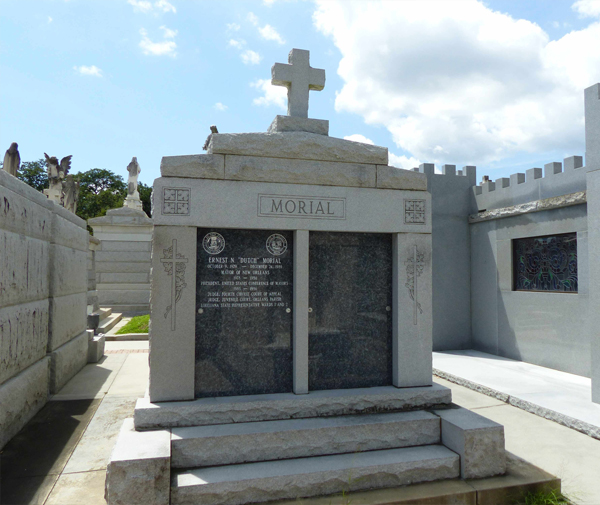
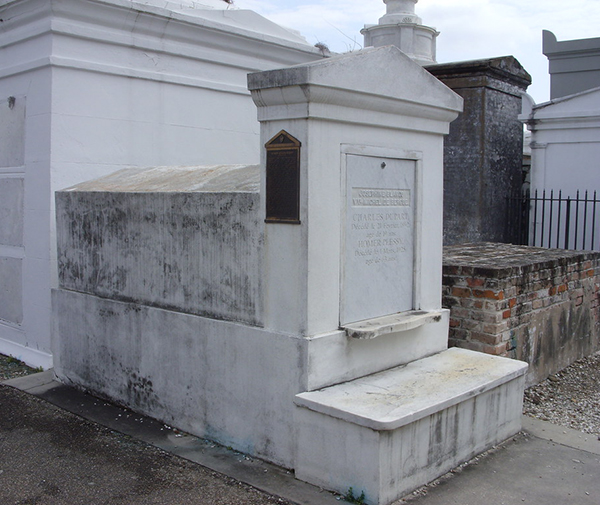
Paul Morphy
1837-1884
St. Louis Cemetery No. 1
One of the world’s greatest chess players who, by the age of 23, had defeated every chess master in America and Europe. Known to be extremely lazy and eccentric, Morphy spent the last fifteen years of his life walking the streets of New Orleans in his bathrobe and slippers talking to himself.
Ernet Nathan "Dutch" Morial
1929-1989
St. Louis Cemetery No. 3
Mayor of New Orleans, 1978-1986. A leading civil rights advocate, he was the first black mayor of New Orleans, serving from 1978 to 1986. His body was moved in 2014 to a new family mausoleum in Saint Louis Cemetery Number 3, having been originally buried in Saint Louis Cemetery Number 1.
Homer Adolph Plessy
1862-1925
St. Louis Cemetery No. 1
Civil Rights Activist and a founder of the Civil Rights Movement who sat in the first class section of a train and refused to move, therefore he helped institute the “separate but equal” racial policy after his arrest and trial.
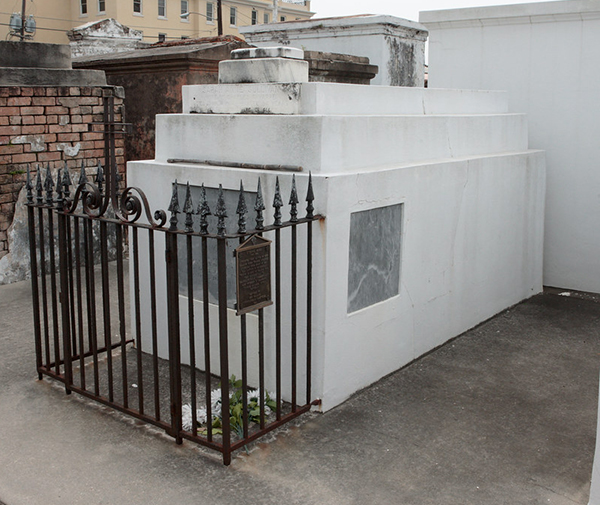

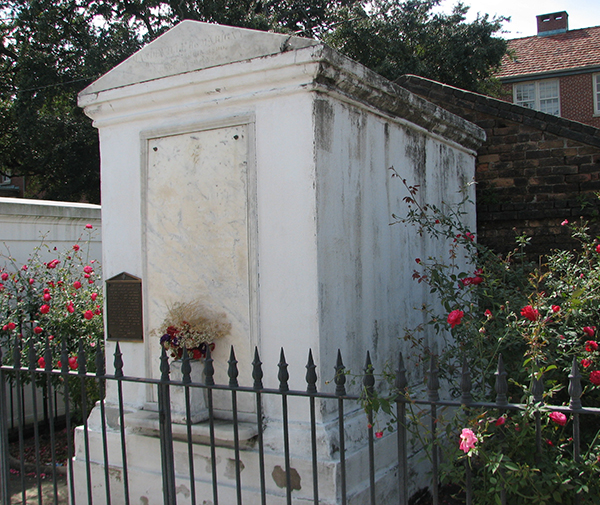
Jean Étienne de Boré
1741-1820
St. Louis Cemetery No. 1
A plantation owner who, after a failed indigo crop, pioneered the growing of sugar cane and the processing of granulated sugar in the South in the 1790s. He was also appointed the first mayor of New Orleans in 1803.
Benjamin Henry Latrobe
1764-1820
St. Louis Cemetery No. 1
Regarded as America’s “Father of architecture”, Latrobe designed the central steeple for the St. Louis Cathedral, renovations to Jackson Square, and the Louisiana State Bank. He died of yellow fever in New Orleans and was buried St. Louis Cemetery No. 1 before his remains were to be moved to the Girod Street cemetery (they were lost in transit).
Jean-Bernard Xavier Philippe de Marigny
1785–1868
St. Louis Cemetery No. 1
Marigny was a gambler, politician, businessman, acclaimed duelist, and considered at one time the richest man in America. He was a major developer of the early city and of Mandeville. As a Politician and Army Veteran, he participated in the framing of the First and Second Constitutions of Louisiana, and served in the Louisiana Territorial Legislature.
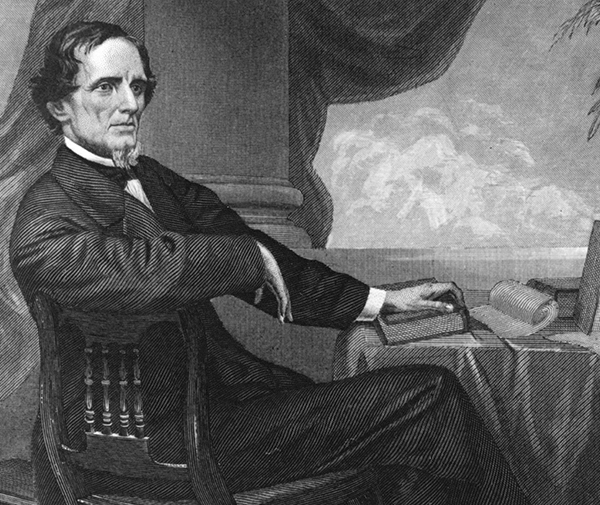
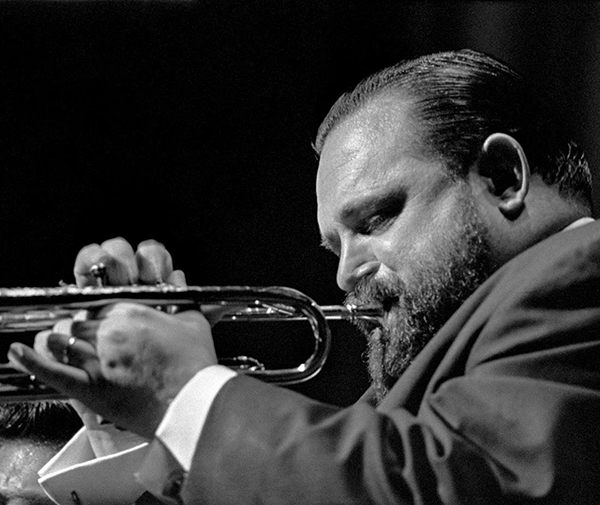

Jefferson Finis Davis
1808-1889
Metairie Cemetery
Confederate States of America President, Author. Former burial location. Jefferson Davis was the unrepentant highest ranking confederate leader of the South. The only Southern leader shackled in a dungeon and sacrificed as atonement for the sins of many. By the time his peaceful death occurred while visiting New Orleans, he was the symbol of the Lost Cause and the most revered man in the South. Eighteen months after his death and temporary burial in New Orleans Metaire Cemetery, Davis's widow, Varina, decided the final burial place was to be Richmond's Hollywood Cemetery considered the National Cemetery of the Confederacy.
Al Hirt
1922-1999
Metairie Cemetery
Jazz Musician. He is considered a trumpet playing legend by musicians around the world. He was a Grammy winner and is in the International Jazz Hall of Fame. The city of New Orleans and the state of Louisiana honored him with a life size bronze statue in the new Legends Park in New Orleans.
Nicknamed "Jumbo", he was without a doubt one of the greatest trumpet players in the world because of his diversity and ability. He will always be remembered as a kind, caring man who gave much more than he ever took.
Jim Garrison
1921-1992
Metairie Cemetery
JFK Assassination Figure. He was the New Orleans District Attorney whose investigation into President John F. Kennedy's assassination led to the trial of businessman Clay Shaw, who was the only person ever brough to trial in connection with the assassination. Shaw was later aquitted. Much of motion picture director Oliver Stone's movie "JFK" was based on his book, "On The Trail of the Assassins." Jim Garrison had a cameo in the film as Chief Justice Earl Warren of the Warren Commission.

The Glapion Family Tomb: Marie Laveau the Voodoo Queen
1794-1881
St. Louis Cemetery No. 1
Marie Laveau was a famous and powerful voodoo priestess and free person of color who lived in New Orleans in the 19th century. Renowned in life and revered in death, some believe she continues to work her magic from beyond the grave. Marie's tomb is the object of adoration and the site of Voodoo offerings, with many visitors marking their pilgrimage by adorning the tomb with at least one large "X". After years of desecration, her tomb was recently restored from its vandalism and makeshift shrines.
Louis Prima
1910-1978
Metairie Cemetery
Jazz Musician. Born in New Orleans, Louisiana. His 1936 composition "Sing, Sing Sing" became one of the biggest hits and most covered numbers of the period.
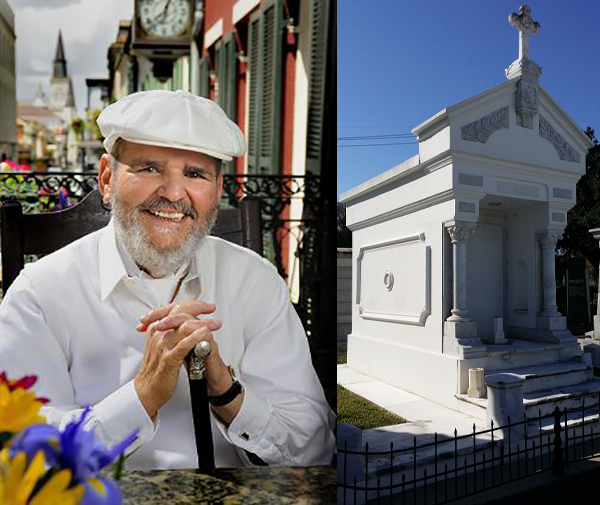
Nicholas Cage
1964-Present
St. Louis Cemetery No. 1
Nicolas Cage has long been known for his eccentric behavior both in front of the camera and in the real world. It seems Cage plans to continue this legacy into death as well as this dazzling while, 9-foot pyramid, plunked down in the midst of crumbling tombs and weathered marble slabs, belongs to the Academy Award-winning actor as his future resting place. Along there is no name inscribed on the tomb yet, there is an inscription — Omnia ab Uno — which translates to "Everything from One" and refers to the Rosicrucian concept of universal unity.
Cage has a history with the city of New Orleans, having purchased both the infamously haunted LaLaurie Mansion and the historic Our Lady of Perpetual Help Chapel. Both properties were foreclosed on in 2009 after a tax debacle. Subsequently, Cage purchased his unnamed tomb in the city’s beloved St. Louis Cemetery No. 1, home to the grave of another of New Orleans’ supernatural heavies, Marie Laveau.
Paul Prudhomme
1940-2015
St. Louis Cemetery No. 3
Celebrity Chef and Entrepreneur. Best known for his introduction of Cajun and Creole cooking to America, he was a farmer's son who wanted to bring the foods of his youth to the masses. His big break came in 1975, when he became the executive chef at Commander's Palace in the Garden District. In 1979, he decided to open his own restaurant, K-Paul's, where he soon hired Emeril Lagasse to work with him. Author of many cookbooks and creator of his own line of spices.
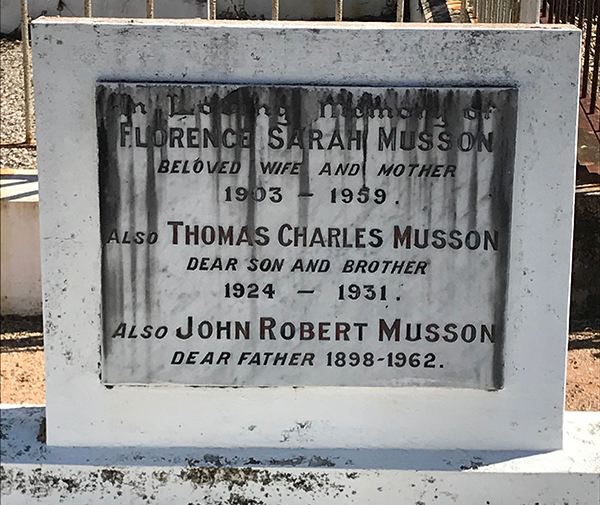
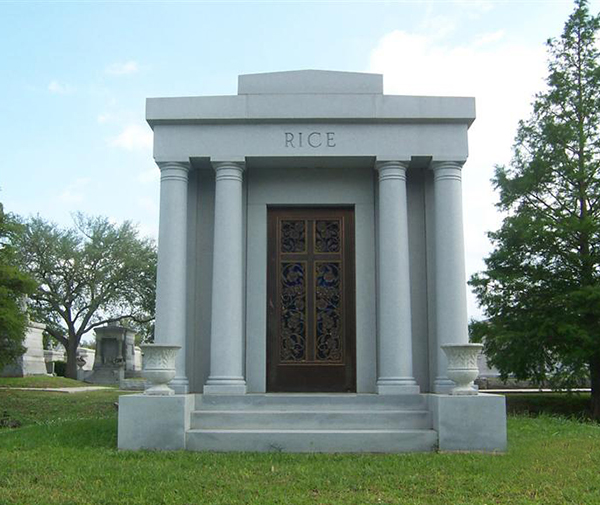
The deGas-Musson Family Tomb
(cousins of Edgar Degas, the Impressionist painter)
St. Louis Cemetery No. 1
The family of French impressionist Edgar Degas is interred in the Musson crypt, an important Creole family in the 1800s. Michel Musson was the maternal uncle of the famous French impressionist painter, Edgar deGas. DeGas visited his New Orleans relatives during the second half of the 19th century and lived for a brief period in a beautiful mansion on Esplanade Avenue. The Edgar Degas House is now a historic home with daily tours, a Bed & Breakfast, and a wedding/event venue.
Stan Rice
1942-2002
Metairie Cemetery
Author, Poet, Artist. He was the husband of Anne (Howard) O'Brien Rice. He graduated from Richardson High School in 1960 with his wife, Anne Rice, author of "Interview with a Vampire." After teaching for 22 years he retired in 1988. That same year they moved to New Orleans and devoted his life to writing poetry and painting.
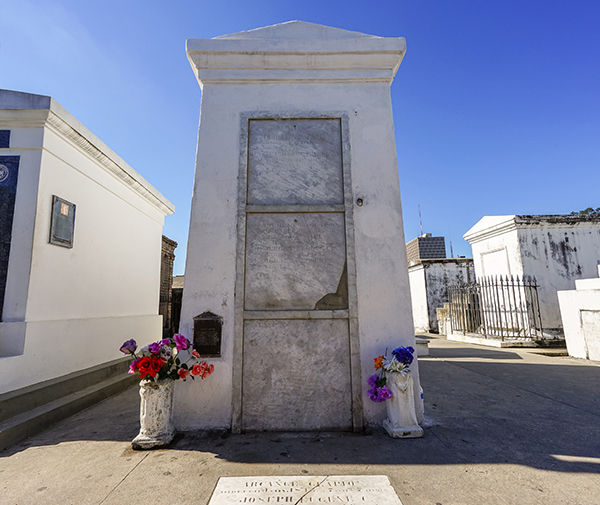
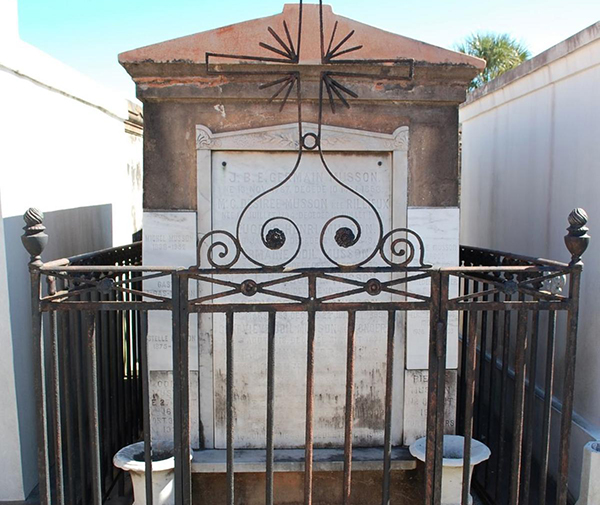
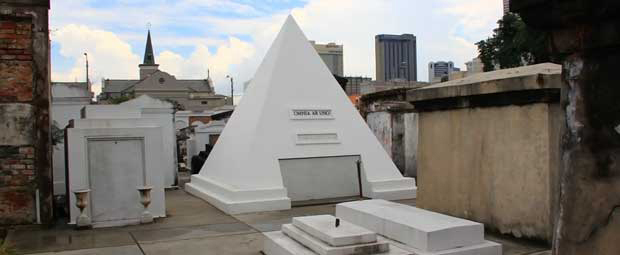
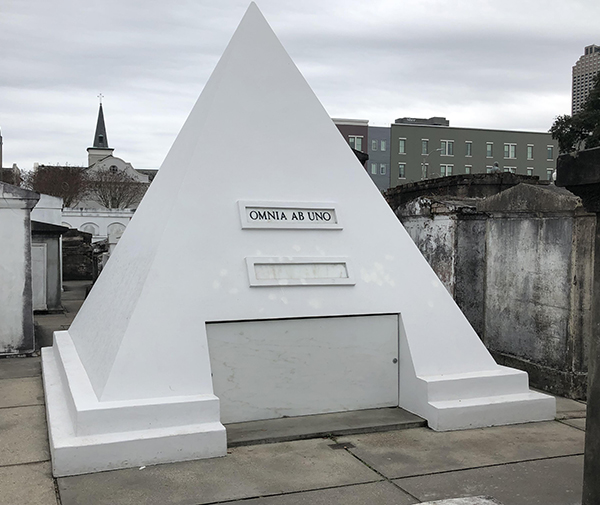
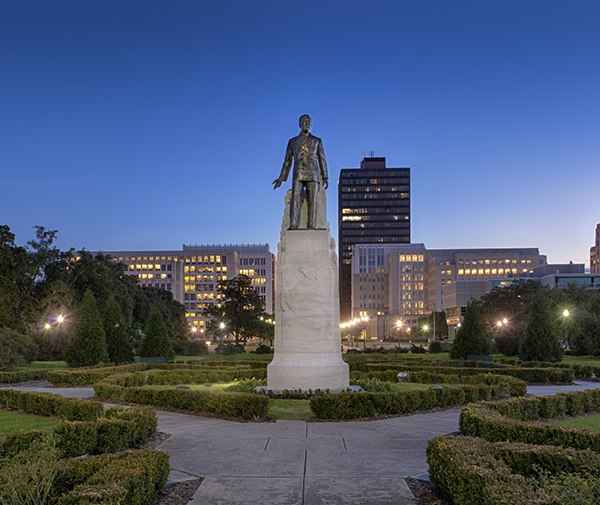
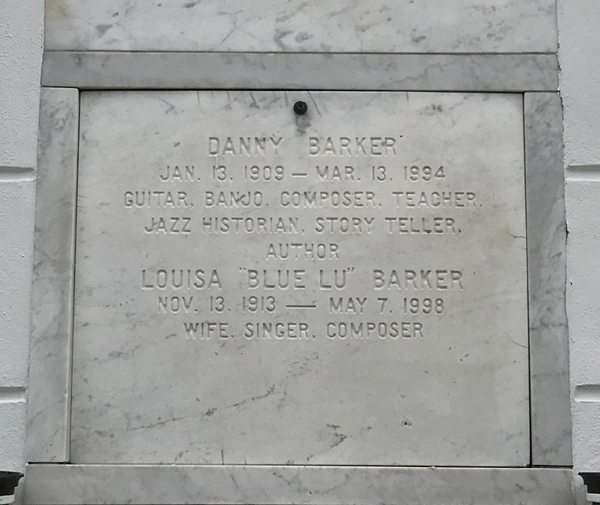
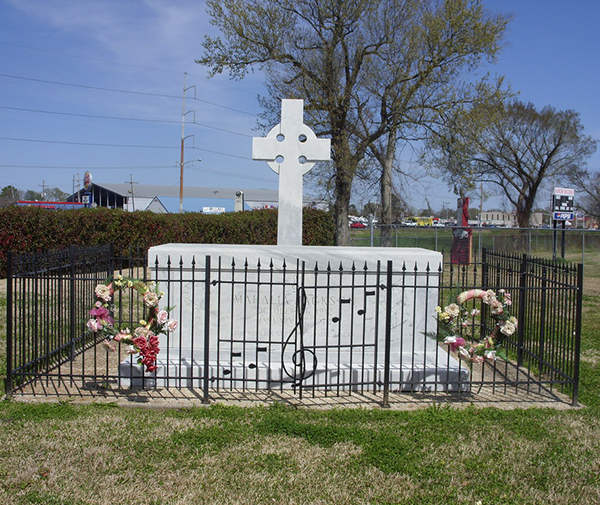
Huey P. Long
1893-1935
Louisiana State Capitol, Baton Rouge, LA
Louisiana Governor. Long was the victim of assassin Dr. Carl A. Weiss. The assassination has been surrounded by controversy. Long was critically wounded on September 8. Dr. Weiss was scheduled to perform surgery on September 9. Since Long was heavily guarded with submachine gun toting bodyguards, an assailant would have to presume his own demise via an attempt on Long's life. It was also never determined whose bullets entered Long's body. There is speculation that bullets from his bodyguards provided the mortal wounds after richocheting. Bullet holes are still visible in the hall of the Louisiana State Capital where Long was shot. The movie "All The Kings Men," was loosely based on the story of Long's life and death.
Danny Barker
1909-1994
St. Louis Cemetery No. 2
Jazz Musician. During the 1930s Barker switched from banjo to guitar, credited with performing on more than 1,000 recordings working with such diverse artist as Dave Nelson, Sidney Bechet, Lucky Millender, Benny Carter, Louis Armstrong, Billie Holiday, Cab Calloway, Charlie Parker and Lena Horne.His two best known hit songs include "Don't You Feel My Leg" (1938) for Blue Lu Barker and "Save The Bones For Henry Jones" (1947) recorded by Nat King Cole. In later years he performed and toured on stage with his wife, singer Blue Lu Barker until his death in 1994.
Mahalia Jackson
1912-1972
Providence Memorial Park, Metairie, LA
Gospel Singer, Television Personality, Civil Rights Activist. She was known as the “Queen of Gospel”. She became one of gospel music’s all-time greats, known for her rich, powerful voice that cultivated a global following. Her concerts and recordings gained worldwide recognition for African-American religious music. Her singing combined powerful vitality with dignity and strong religious beliefs. She disliked being identified with nonreligious music, though her singing style revealed the influence of jazz and the blues. She worked with artists like Duke Ellington and Thomas A. Dorsey and also sang at the 1963 March on Washington at the request of Dr. Martin Luther King Jr.
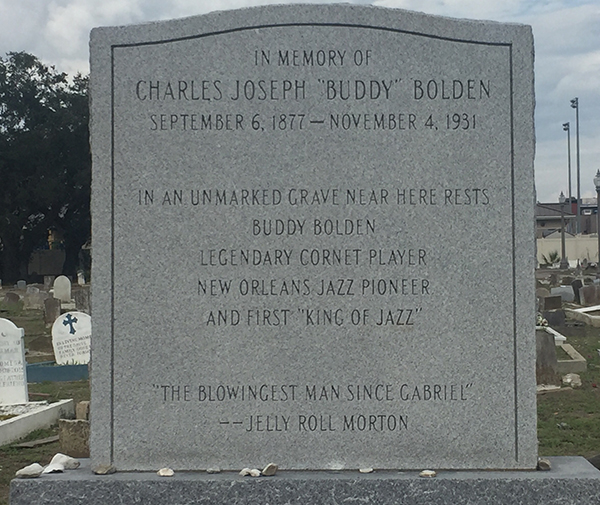
Josie Arlington
1864-1914
Metairie Cemetery
The Josie Arlington/J. A. Morales Tomb once held one of New Orleans most notorious madams, Josie Arlington, from the city’s equally notorious red light district, Storyville. Arlington’s reputation and the tomb she created for herself have attracted visitors and locals alike, from the time of her burial until today, when some observers say they have caught a glimpse of lights dancing around her mausoleum -- Josie Arlington, trying to get back into her grave.
Charles "Buddy" Bolden
1877-1931
Holt Cemetery
The Holt’s most famous resident is jazz king Charles “Buddy” Bolden, described by pianist Jelly Roll Morton as “the blowingest man since Gabriel.” Bolden died penniless, and is buried in an unmarked grave in this poignant place.
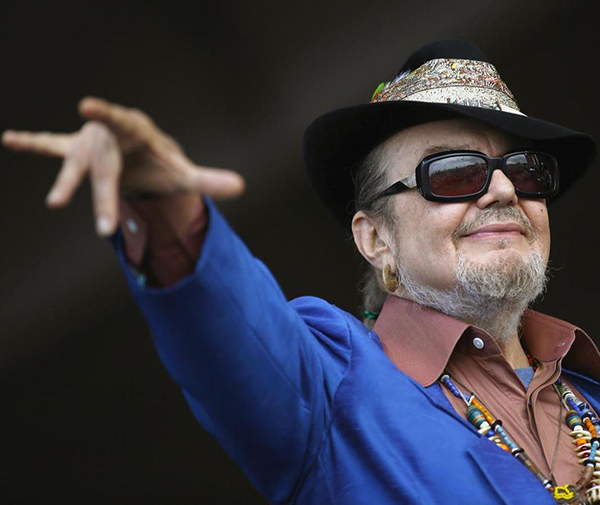

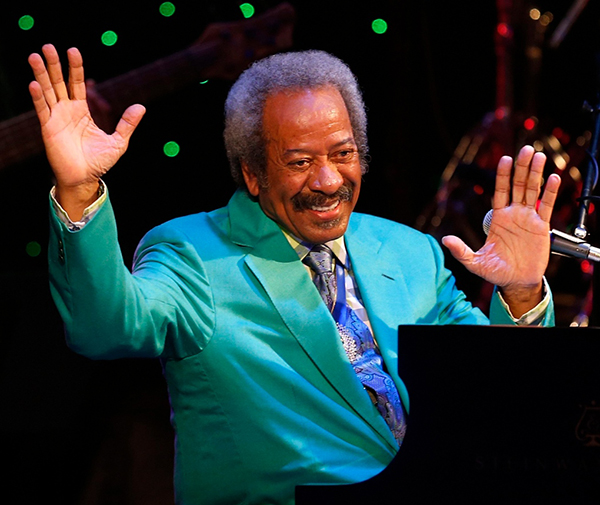
Dr. John
1941-2019
St. Louis Cemetery No. 1
Musician. He will be remembered for his Top 10 hit "Right Place, Wrong Time" (1973). By the late 1960s, he developed a fascination with the practice of Voodoo from his New Orleans' roots and adopted the name "Doctor John." During the course of his career, he recorded more than two dozen albums and received six Grammy Awards. He was inducted into the Rock and Roll Hall of Fame in 2011.
John Kennedy Toole
1937-1969
Greenwood Cemetery
Author. He was posthumously awarded a 1981 Pulitzer Prize for his uproarious picaresque novel "A Confederacy of Dunces". Its antihero, Ignatius J. Reilly, is one of the most original characters in American Literature. Set in a richly evoked New Orleans of the 1960s, the book weaves Ignatius's misadventures with a host of colorful types into what one critic called "a grand comic fugue".
Allen Toussaint
1938-2015
Mount Olivet Cemetery & Mausoleum
Composer. As a member of the Rock and Roll Hall of Fame, Allen Toussaint has spent the majority of his years composing music, directing and performing across the world. With Elvis Costello he produced the album "The River in Reverse" and developed the Sea Saint Recording Studios which was used by several artists to produce a variety of albums.
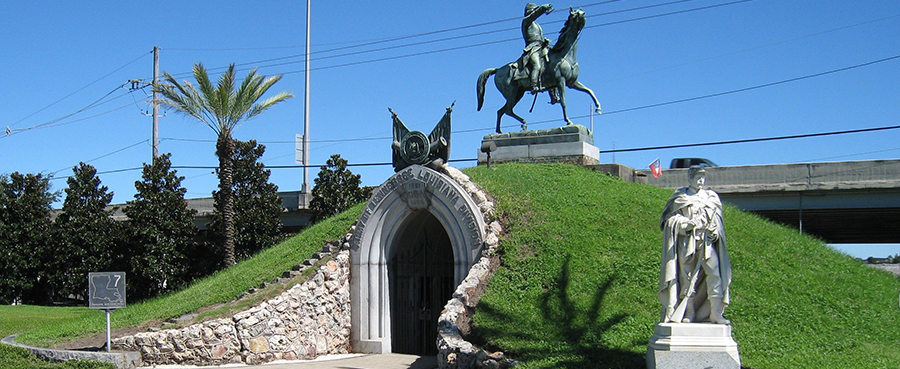

P.G.T. (Pierre Gustave Toutant) Beauregard
1818-1893
Metairie Cemetery, The Army of Tennessee Memorial
Civil War Confederate General. Best known for his attack on Fort Sumter, thus starting the civil war. Known as the Napoleon in Gray, Beauregard participated in every phase of the Civil War from its beginning to its end, including the first battle of Bull Run, the Battle of Shiloh, the Siege of Corinth, and the second battle of Petersburg. Following the war, Beauregard was almost the only prominent Confederate general who adapted successfully to the New South, running railroads and later supervising the notorious Louisiana Lottery. As a civilian, he served as president of the New Orleans, Jackson, and Mississippi Railroad (1865-1870) and of the New Orleans and Carrollton Street Railway (1866-1876). His life story is a paradox of a man who fought gallantly to defend the Old South and then helped industrialize.
Pierre Soulé
1801-1870
St. Louis Cemetery No. 2
Writer and Democrat Senator from Louisiana. He served in the US Senate in 1847 and from 1849-1853. Exiled from France as a teenager for revolutionary activities, he returned to his native country only to be jailed for publishing more anti-government papers. He escaped from prison and immigrated to New Orleans. Here, he established a law practice and became a U.S. Senator. His former home is now Maison Soulé, a French-Creole Restaurant in the French Quarter.
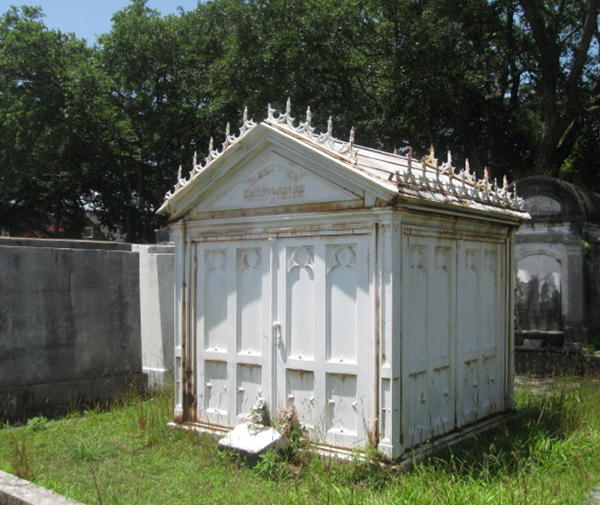
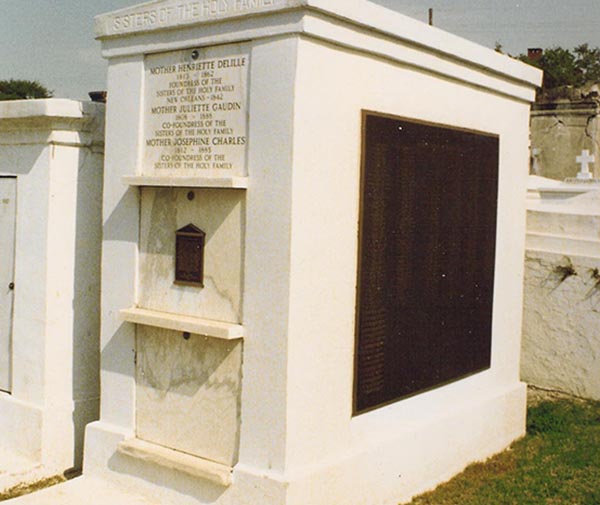
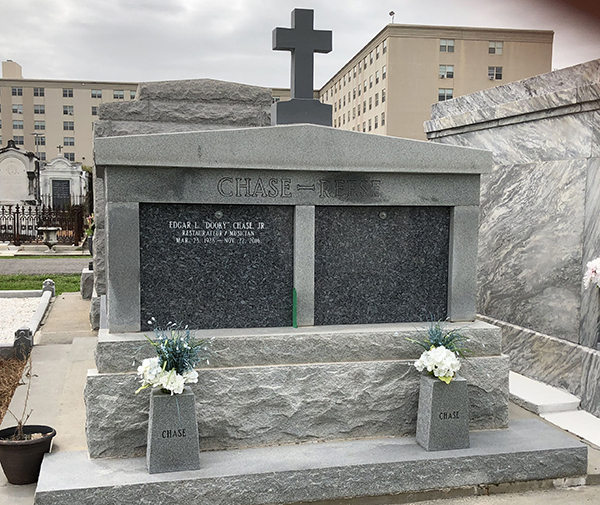
The Vampire Lestat de Lioncourt
from Anne Rice's Interview with a Vampire
Lafayette Cemetery No. 1
The vampire Lestat’s tomb, made from Styrofoam for the movie, Interview with a Vampire, was possibly modeled after the cast iron Karstendiek tomb, pictured above. Story has it that Tom Cruise would not enter the crypt as the script called for, so a replica was created as to not disturb the original entombment.
There are several famous fictional residents of Lafayette Cemetery No. 1 including the tomb for the Mayfair witches, created by Anne Rice, in The Witching Hour, which fits a combination of the Lafayette and Jefferson fireman tombs. Rice also staged a jazz funeral where she rode in a glass enclosed coffin down the center aisle to introduce her book Memnoch the Devil.
The Venerable Henriette DeLille
1813-1862
St. Louis Cemetery No. 2
Religious Figure. She received notoriety for being the founder of the African American religious community, Sisters of the Holy Family. While her maternal great-grandmother was a slave from West Africa, she was a fourth-generation free woman of color, hence she was a quadroon, who was trained to be a mistress to wealthy white men. She had a religious experience and instead she sold all her property and on November 21, 1836; she and eight other black women became the Sisters of Presentation. They cared for the sick and poor and upon acceptance of the order by the Roman Catholic Church assuming the name Sisters of the Holy Family in 1842.
Leah Chase
1923-2019
St. Louis Cemetery No. 3
Legendary Creole chef. An author and television personality, she was known as the Queen of Creole Cuisine, advocating both African-American art and Creole cooking. Her restaurant, Dooky Chase, was known as a gathering place during the 1960s among many who participated in the Civil Rights Movement, and was known as a gallery due to its extensive African-American art collection. In 2018 it was named one of the 40 most important restaurants of the past 40 years by Food & Wine.
Leah Chase was also the inspiration for Princess Tiana in Disney’s The Princess and the Frog.
The Family will continue her legacy of “Work, Pray, and Do for Others.”
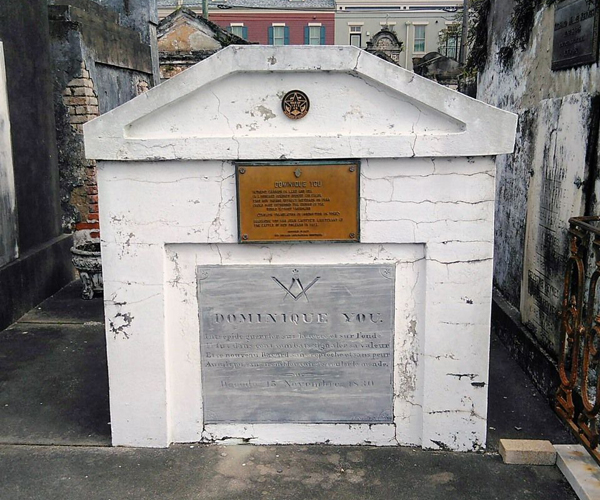
Weeping Angel Statue's Tomb: Chapman Henry Hyams
1838-1923
Metairie Cemetery
Chapman Hyams was a millionaire stock broker in New Orleans and an art collector. He had many business interests, including holdings in the St. Charles Hotel Company, the Louisiana Jockey Club, and The Times-Picayune Publishing Company. He was also a member of the New Orleans Cotton Exchange, the Stock Exchange, the New Orleans Club, the Boston Club and the Southern Yacht Club. He died in April 1923, and he, too, was buried in the Hyams mausoleum.
The mausoleum in Metairie Cemetery was designed by Favrot & Livaudais, one of the leading architectural firms at the end of the 19th century and the early decades of the 20th century. It is a Greek temple with free-standing Ionic columns on all four sides, made of granite from the quarries of Stone Mountain, Ga. Inside are a large blue stained-glass window and two smaller ones that cast light on the marble statue of a grieving angel. Chapman's monument is a copy of the "Angel of Grief" done by William Wetmore Story. William Wetmore Story angel serves as a monument for himself and wife in the Protestant Cemetery, Rome, Italy.
Dominique You
1775-1830
St. Louis Cemetery No. 2
Patriot and Pirate. Half brother to Jean Lafitte and Pierre Lafitte, he was the pirates captain on the French Corsair Le Pandoure. He was also known as Alexander Lafitte. According to history, he had a reputation for being very bold and daring. He and his brothers were successful pirates in the Louisiana bayous, and in the Gulf of Mexico. His men fought in the battle of New Orleans on January 8, 1815, and were mentioned in General Andrew Jackson's general order of January 21 as "having shown uncommon gallantry and skill in the field". He settled quietly in New Orleans where he became a politician and supporter of General Jackson.

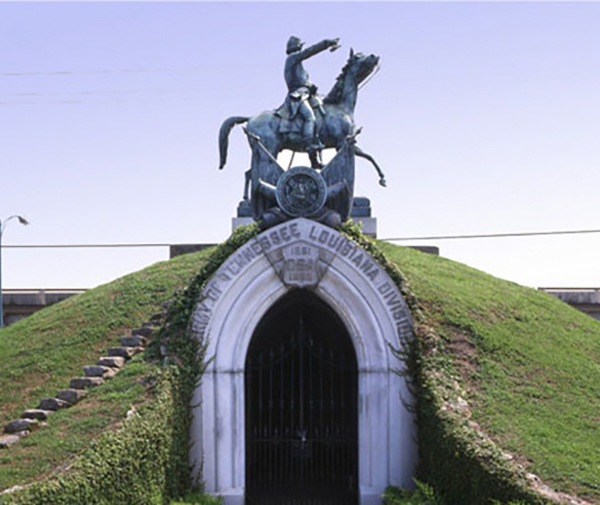
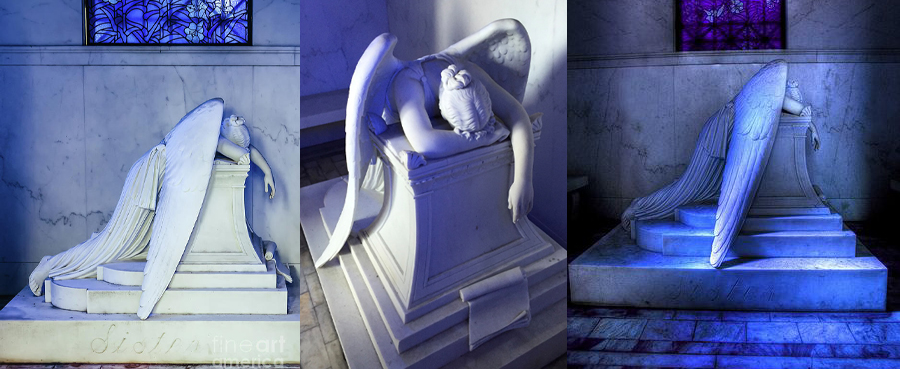
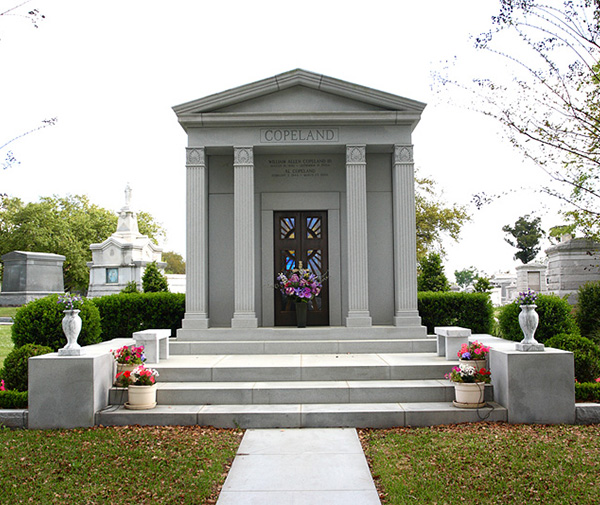
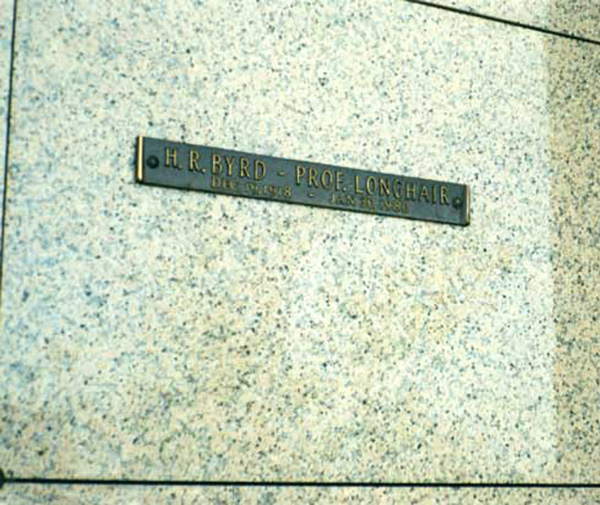
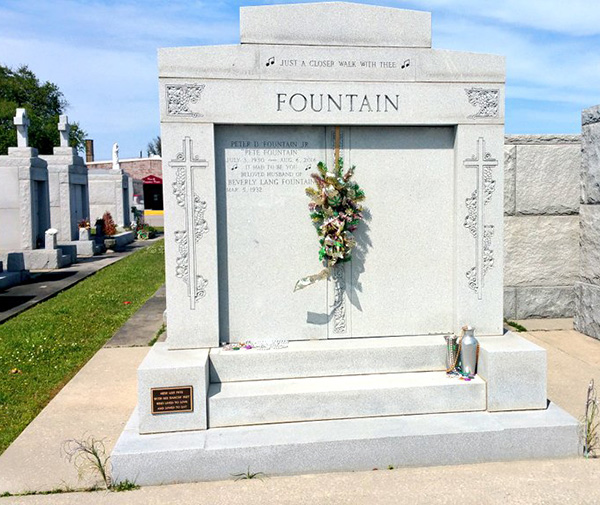
Al (Alvin) C. Copeland
1944-2008
Metairie Cemetery
Entrepreneur. At age 18, he sold his car to open a one-man doughnut shop and had ten successful years in the doughnut business. He founded Popeye's Chicken and Biscuits in 1976, began franchising his restaurant chain and by 1987, his company was the third largest fast food chicken chain in Amercia. In March 1989, he purchased Church's Chicken, combined the companies operating the two chains in over 2,000 locations, national and world wide. He also founded Copeland's Cheesecake Bistro, Cajun Fire and Ice Restaurants and Al's Diversified Food & Seasonings, a line of specialty foods and spices for large national restaurant chains.
Henry Roeland “Professor Longhair” Byrd
1918-1980
Mount Olivet Cemetery & Mausoleum
Singer, Pianist, Rock and Roll Pioneer. In his late 20s, he took the stage at the Caldonia Club while the regular band was on a break. An instant hit, he was hired. He and the members of the band all had long hair and were thereafter referred to as "Professor Longhair and the Four Hairs." Along with a group of fans and promoters in New Orleans, in 1977 he purchased a warehouse and converted it into a nightclub called Tipitina's, named after one of his songs. It was conveniently located close to his home. Tipitina's still operates as a jazz club today and houses a collection of Professor Longhair memorabilia.
Pete Fountain
1930-2016
Metairie Cemetery
Clarinetist. He founded The Basin Street Six in 1950 with his longtime friend, trumpeter George Girard. After this band broke up four years later, he was hired to join the Lawrence Welk orchestra and became well known for his many solos on Welk's ABC television show. He returned to New Orleans, first playing with The Dukes of Dixieland and then forming his own bands. He opened his own club, the French Quarter Inn, in 1960 and it became a popular spot for many performers to appear at. He was also a founder and the most prominent member of the Half-Fast Walking Club, one of the best known marching Krewes that paraded in New Orleans on Mardi Gras Day.
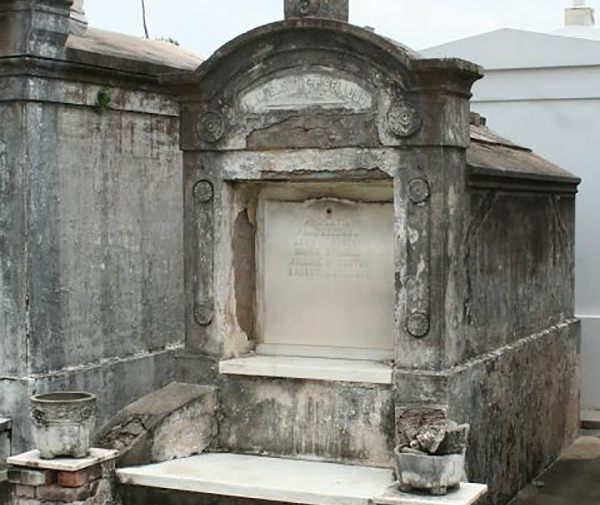
The New Orleans Musicians Tomb and The Barbarin Family Tomb
St. Louis Cemetery No. 1
Topped with a blue glass music note, the society tomb for musicians inters the most famed member of the Barbarin Jazz Dynasty, Isidore Barbarin (1872-1960), who played cornet and mellophone, led the Onward Brass Band, and was also a driver of the horse-drawn hearses involved in many early jazz funerals. The Barbarin Family is a dynasty of New Orleans Jazz. Several generations have carried the music from its first flowering to the present day.
This historic tomb, which since the 19th century had interred the Sacred Union Society and the Barbarin Family now also acts as the New Orleans Musicians Tomb. The idea to provide free burial to musicians was conceived by Anna Ross Twichell. Burial space was donated by the Barbarin Family and the tomb was restored by Friends of New Orleans Cemeteries. Tributes include Fats Domino, Ernie & Antoinette K-Doe, Earl King, Jordan Noble, and more.
E.J. (Ernest Joseph) Bellocq
1873-1949
St. Louis Cemetery No. 3
Photographer. Famous for his early 20th century photographs of the prostitutes of Storyville. Although he did other more commercial work of buildings, machinery and ships from approximately 1895 to 1940, it was his images of the darker side of New Orleans that are most memorable. After his death, much of his work was destroyed. However photographer Lee Friedlander discovered the 89 surviving Storyville glass plate negatives in 1958, and purchased them in 1966.
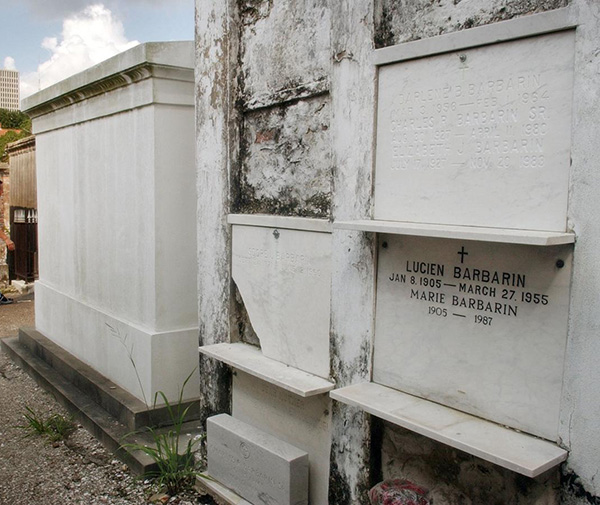
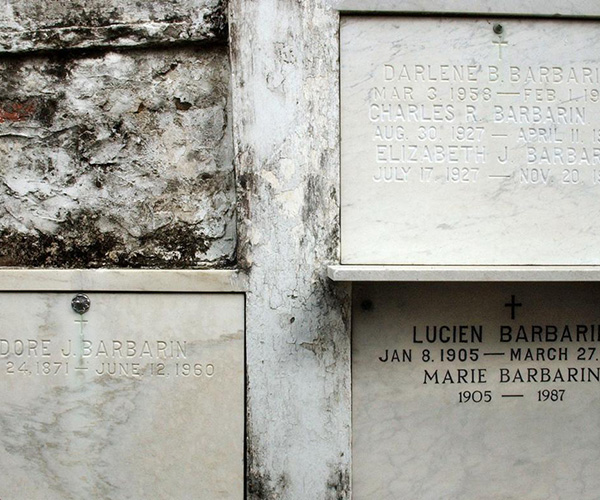
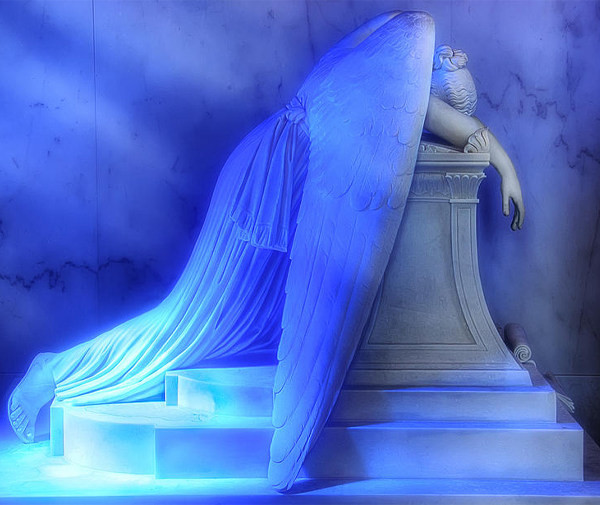
Cemeteries, or Cities of the Dead, throughout New Orleans are the final resting place for New Orleanians from all walks of life. Politicians, clergy, businessmen and women from various industries, musicians, pirate, brothel madams, and pennliess authors. Exploring the famous residents of these cemeteries is one of the best ways to learn the history of the city and its former inhabitants.

SITE CURRENTLY UNDER CONSTRUCTION.
• • •
Please pardon our pixel dust!
SITE CURRENTLY UNDER CONSTRUCTION.
